Male Seahorse Reclining (on Seaweeds after Giving Birth to His 2500 Kids)
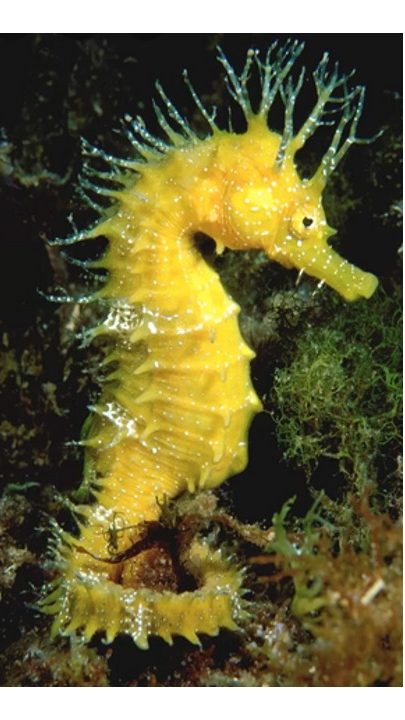 eahorses were in my orbit of interest since I was a few year old kid. In our living room there were a few objects that belonged to my grandfather, who died long ago, in 1921, right at the end of the Polish-Bolshevik war. He was a doctor, then commander of a front hospital of the Polish Army on the south-eastern front, whereas before 1914, he was with the Austrian navy on the Adriatic Sea, and had a chance to travel through all the seas around. And brought home a Glass Globe from one of the trips. My father was 11 years old when the Grandpa died and treasured greatly those few things that survived both wars and displacements. One was a little bronze urn of likely pre-historic middle eastern or Balkan origins, and another was a glass globe with pieces of various corals, shells and among other them, a seahorse. The seahorse attracted my attention, and to see it you had to ask as it was kept high on a shelf and behind the glass. I remember watching it in its glass globe and marveling over how scary it was, even if tiny. The closest image I could find on the web to the one I am talking about to convey the impression of the time is attached below
eahorses were in my orbit of interest since I was a few year old kid. In our living room there were a few objects that belonged to my grandfather, who died long ago, in 1921, right at the end of the Polish-Bolshevik war. He was a doctor, then commander of a front hospital of the Polish Army on the south-eastern front, whereas before 1914, he was with the Austrian navy on the Adriatic Sea, and had a chance to travel through all the seas around. And brought home a Glass Globe from one of the trips. My father was 11 years old when the Grandpa died and treasured greatly those few things that survived both wars and displacements. One was a little bronze urn of likely pre-historic middle eastern or Balkan origins, and another was a glass globe with pieces of various corals, shells and among other them, a seahorse. The seahorse attracted my attention, and to see it you had to ask as it was kept high on a shelf and behind the glass. I remember watching it in its glass globe and marveling over how scary it was, even if tiny. The closest image I could find on the web to the one I am talking about to convey the impression of the time is attached below
I became curious about the seahorses frankly because of the way how fearsome they looked, and how strange and un-fishy way they moved in an aquarium: mainly vertically up and down. I have always been attracted to aquaria and the strange life-forms the sea creatures take. So, when I became engaged in my form of the art, I saw marine life as a unique opportunity of inspiration.
Seahorses can easily be seen as prototypes for dragons and various monsters, hybrid forms between lions, crocodiles, serpents, raptors…. that populate refined imagery as early as Mesopotamian, or Egyptian, or ancient Chinese times, going back to 2000 y. BC, or more. There were plenty of sculptures, wall painting, papyruses, gold and other precious statuettes depicting those. Not to mention an infinity of dragons to be killed by Saint George, as depicted below by Vittore Carpaccio from a recent exhibition at National Gallery in Washington, DC. Whether they were inspired by possible fossil finds of dinosaurs, or reports of rare encounters with various strange contemporary creatures, large or small, will probably never be found. For sure, whoever looked closely at a seahorse must have remained impressed. And there were plenty of people that did that, given the fact (unknown to me earlier) that seahorses (as fried skewers) were and are a popular food delicacy of South-east Asia, to the point that there are serious concerns of their extinction, of some of the sub-species, anyway (de gustibus non disputandum est, to use the ancient expression).
Glass Globe with Seahorses (ab. 1900) Ancient Chinese Dragon Print
Vittore Carpaccio (Venician, 1465 – 1525), San Giorgio ed un dragone
There are apparently about 50 species of seahorse family of all sorts of colors and sizes, with various degrees of talent for mimicry and spookiness. They prefer warm seas, coral, or seaweed environment. Some of the family portraits are exposed below.
from the top left: Red long-snouted s.h; Pygmy s.h.; Hedgehog s.h.; Lined s.h.; Long-snouted s.h; Pot-bellied s.h.
For some reason (maybe because of my grandfather connection, or maybe because of their undeniably horsy looks, and the fact that we all like horses, not only Queen Elisabeth) I felt an instinctive sympathy toward sea horses. That is, until I learned this. They are perfect killers (even perfecter than humans). Apparently, when they hunt for food, they float slowly with the current seeming like they were a piece of wood or weed. They could occasionally move vertically up and down, always quite slow. But when they feel they have come in a striking distance from their prey, they jump with a speed of light, before anybody can notice (including their dinner).
There are many strange creatures under the sun, but seahorse is peculiar in a unique sense. Their sex life, or more biologically, their reproduction mechanisms have no parallels. When I was growing up in the sixties of the past century, we adolescent boys and girls were mesmerized by a “huge” award promised to a first male that would give birth to a child. I think, the amount was like $ 50,000. Jokes appropriate for the age (or inappropriate) apart, there is, or there were the winners for the prize waiting already: the male seahorses. Given an incalculable number of the winners, i guess, the prize founders should be bankrupt by now.
To be brief, male seahorse is equipped with a zipped brood pouch upfront in his belly where Madame Seahorsess deposits her eggs using a dedicated pipette. The eggs are fertilized by Monsieur in the close environment of the controlled chemistry water of the pouch and supplied by the father with food, hormones, calcium for the skeleton growth, and what not, and after xx days are ready to go. Daddy then ejects them all 2500 brothers and sisters into the ocean and says bye bye, see the photo attached below.
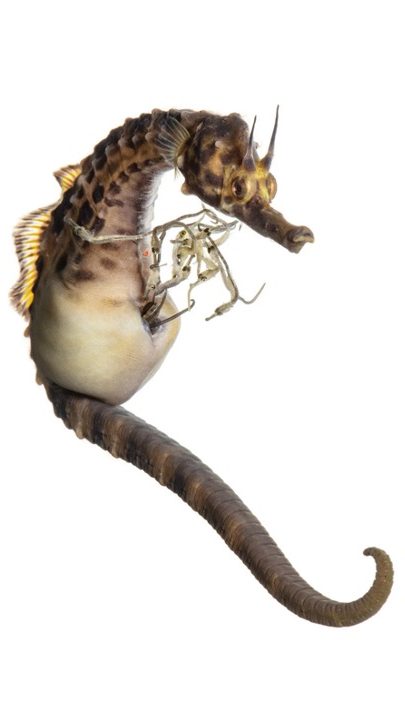 Pot-Bellied Seahorse, Hippocampus abdominalis; specimen No. 70; male giving birth; 5.5 inches tall. David Liittschwager, National Geographic
Pot-Bellied Seahorse, Hippocampus abdominalis; specimen No. 70; male giving birth; 5.5 inches tall. David Liittschwager, National Geographic
About 7 of them survive on average, all seven pictured in my piece of art. And Daddy is ready for a new load after a few days of vacation. Descriptions of the process, including a ritual underwater mating dance are fascinating, including the motivation of Mother Nature for the unusual role reversal: apparently, according to the back-of-the envelope energy calculus of Mother Nature, the female Seahorse needs a lot of energy to produce all the eggs, so Mother Nature designated the father for the gestation job, in the spirit of equality of division of labour.
The morale of the story of seahorses appears to me to be that Mother Nature (or Almighty on the Fifth Day (Cosmic Friday?), or Sister Evolution, or All Combined) had a number of scenarios for reproduction of creatures in their sleeves, and as They confessed (e.g. in Genesis 1:3–2:3; 21) about those They have tried, They “saw that it was good”, which must have included seahorses, still going today, 13-3 million years since they were created (or evolved from a pipefish), and not abandoned as an idea, despite of a constantly growing competition. There is a handsome list of a variety of reproduction mechanisms and sexual habits produced and perpetuated by the Creator(s), which appear to be included in their assessment “They saw that it was good”, left with the commandment: deal with it as is, and a stern implication “don’t try to regulate what I have created” and a stamp of (self-) approval. Other implications are clear.
Here is my Seahorse (he/him/his) and his seven off-springs at various stages of execution:
sketches
The End

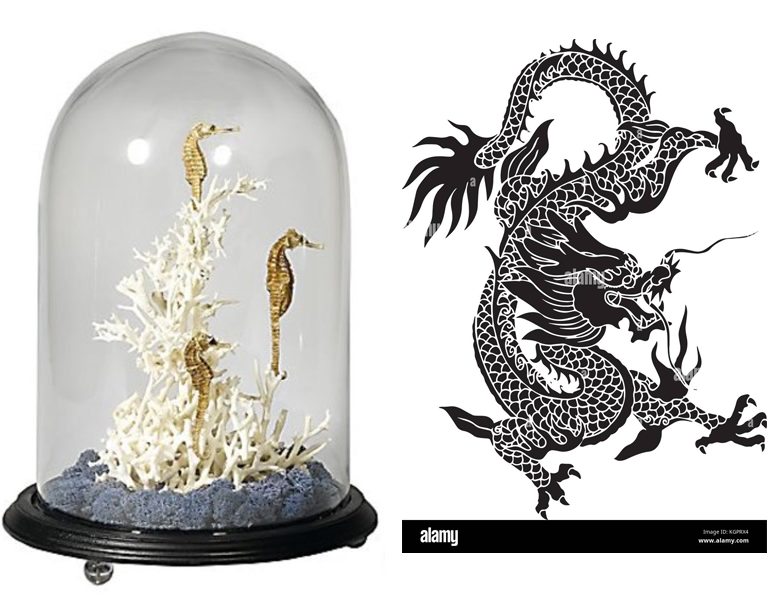
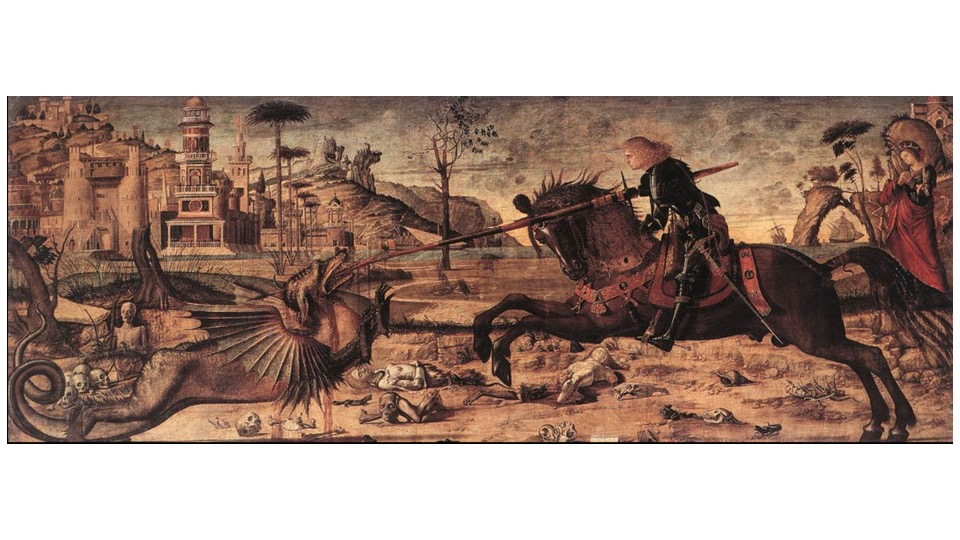
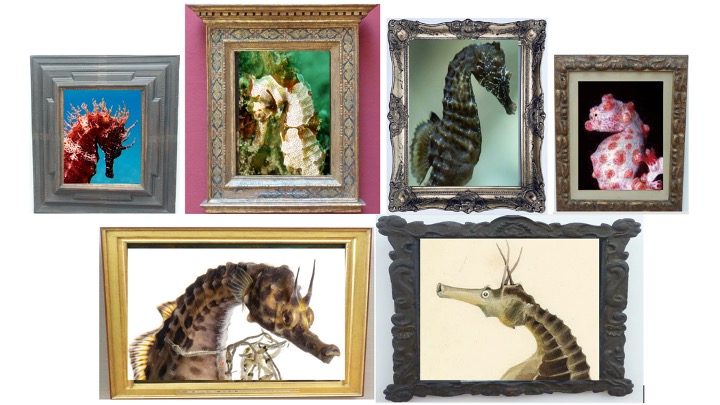

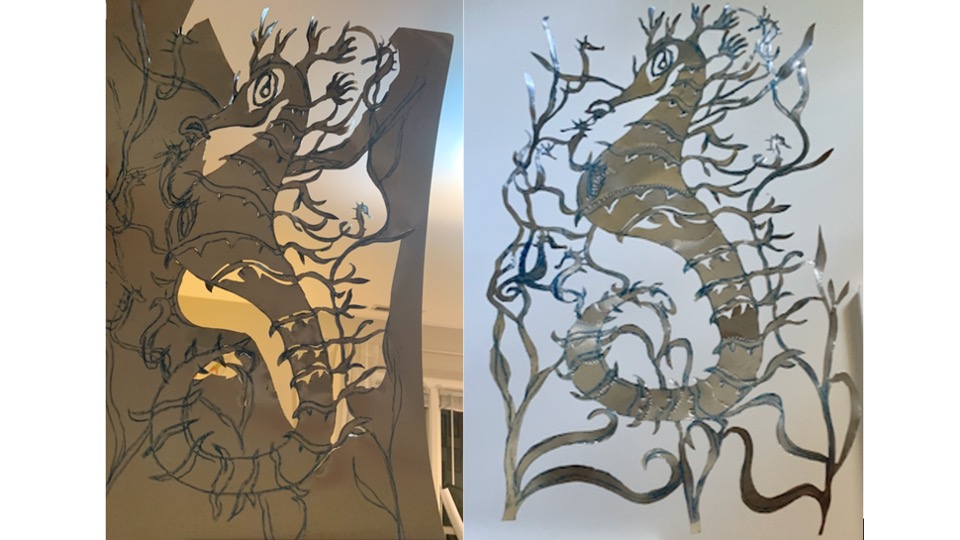
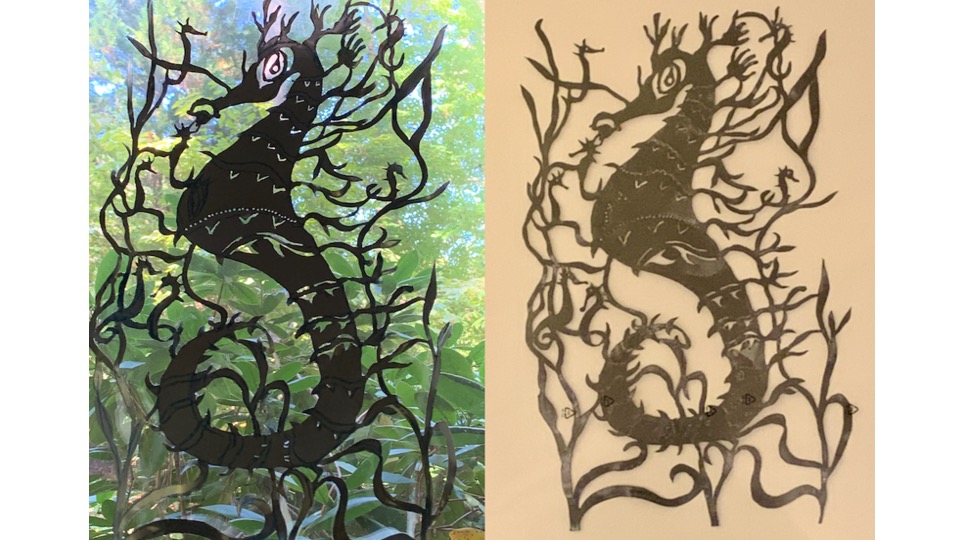
Lovely, happy to see your new masterpiece completed – and so accomplished. He’s looking particularly striking against the green background.
Thank you. Yes, his green environment has been very popular !
Love this new familily, Tomasz! I wonder: Did you paint a back green-and-blue decor, then put your horses on it? Or did you hang the horses on an aquarium to figure the horses in their natural colorful element?
He he. You hit the key point. I did neither. I have scotched my cutout to the window, as I usually do half way through my work, to see how it looks. But it happened to have a rhododendron behind it and a piece of sky. Altogether giving a sense of an aquarium or a sea bottom. By pure chance.
Hi Tomek,
Very nice! You are a real artist.
The older I become, the more I am interested in art.
I am writing now a new book, with the tentative title:
“An introduction to continuum mechanics with a view on art and nature”
Who knows if I’ll be able to finish it, for the moment the book is a neverending story to keep me awake while the world around is becoming definitely mad and bad.
Meanwhile, it is important to enjoy art.
Hope to see you soon
Un caro saluto
Davidoski
Grazie, Davide! Good luck for your new book. We professional mechanicians (we both are) recognize that the concepts of equilibrium, balance, symmetry (and asymmetry), density, continuity, flow, flux, and spin are common to visual, performance and musical arts and mechanics (and physics) of the matter. Children of the same (human) mind mimicking the nature and feelings (I better stop here). I look forward for your book !, best. T.
A proud and regal Papa indeed! And, a magnificent work of sculpting.
Thank you for sharing the result of the creative burst.
Thank you, Barbara.
Tomku, to przesliczne!
Thanks, Marta. That has been lot of fun cutting it. Cheers, T.
Hello Tomek,
I am very happy that after a long break you are so enthusiastically returning to your artistic endeavors, this time with charming new little creatures with curly tails, called seahorses.
In your artistic rendition these sea horses display a fearless posture which truly invokes something of a dragon or serpent or some other antediluvian reptile…. Your magic scissors did not miss any of his unique features. Bravo, my dear! As much as time allows you, cultivate your unusual talent, to leave to this miserable world of ours, recently rather in poor shape, as many beautiful testimonies as possible. Let them bring joy to our and our descendant’s eyes, hearts and souls.
Marek
Seahorses are fun !!!!